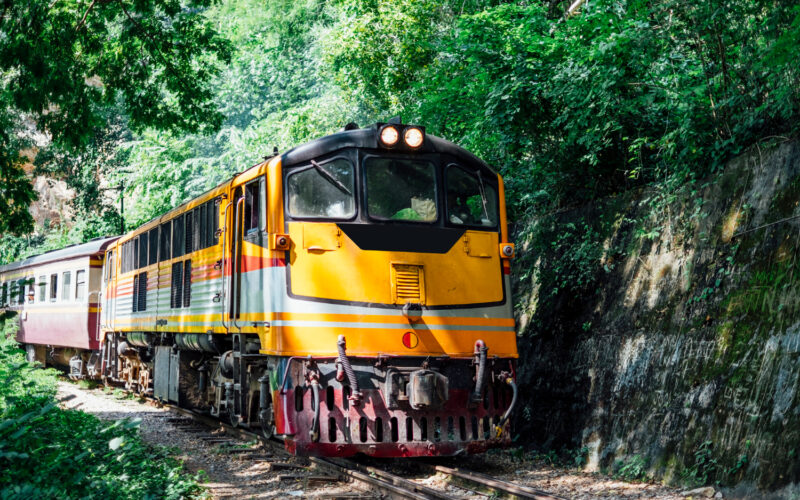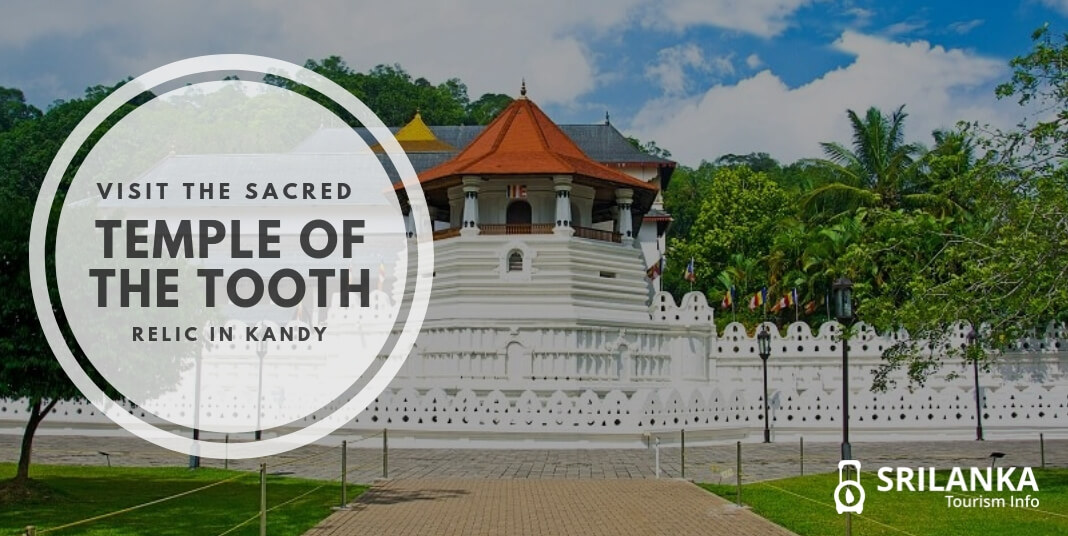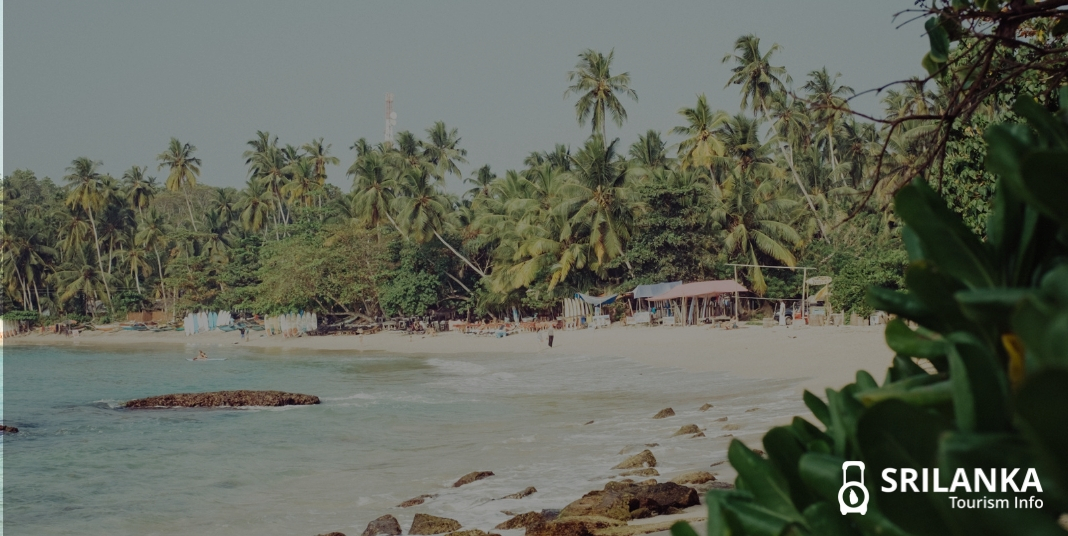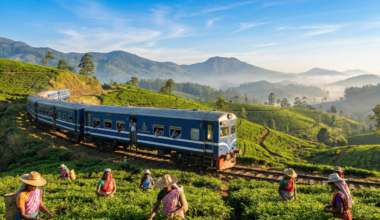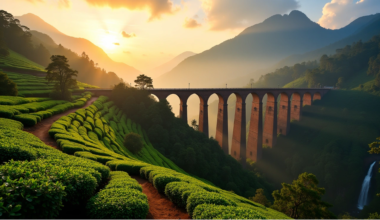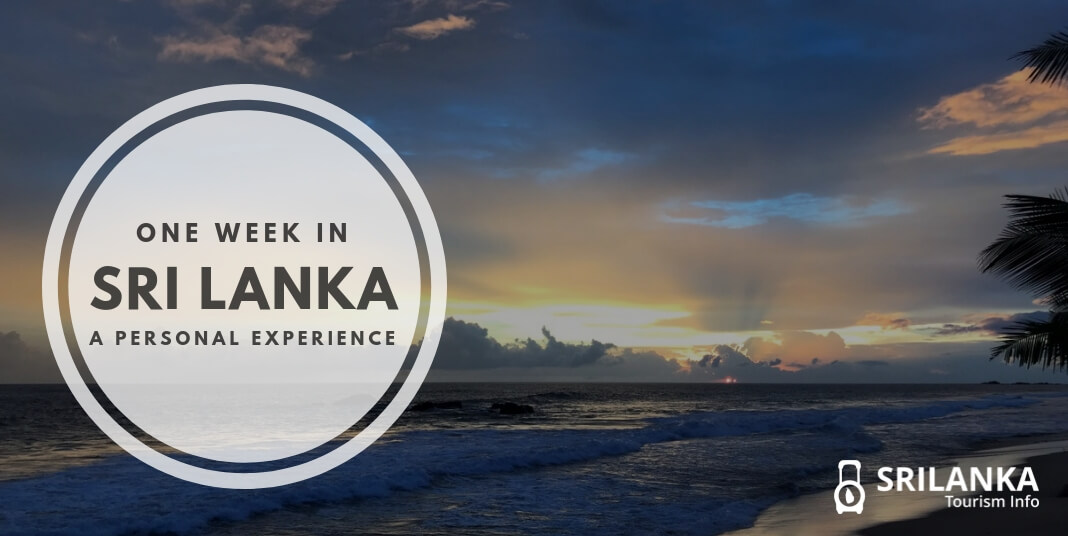Did you know that Sri Lanka’s transport has what many call “the most beautiful train ride in the world”? The stunning trip between Nuwara Eliya and Ella shows off mountain views that made it famous with travelers worldwide.
Getting around Sri Lanka goes beyond scenic train rides. Busses reach the island’s most remote spots and zip through traffic with sudden bursts of speed. Trains might not be the fastest way to travel, but they give you the best views in Sri Lanka and let you connect with local culture in ways other transport just can’t.
Your wallet won’t take a big hit here. A train trip from Colombo to Jaffna in third class costs just $4, and first-class seats on the same route are only about $12. The public transport system might seem tricky to figure out at first.
Sri Lanka’s transport options can make or break your trip, whether you’re seeking adventure or just want to relax. You’ll find everything from packed buses without AC to better rail networks that have improved. Each choice gives you a different way to see this beautiful island.
Let us help you understand Sri Lanka’s transport options better. You’ll spend less time worried about getting around and more time enjoying your trip.
Choosing the Right Transport for Your Trip
Picking the right way to get around Sri Lanka can make your trip amazing or frustrating. Unlike what you might be used to back home, getting from place to place here isn’t simple. You’ll need to balance a few things and figure out what works best for you.
Factors to think over: budget, time, comfort
Your budget shapes your transport choices in Sri Lanka by a lot. Public busses are the cheapest way to go, with fares that are dirt cheap compared to other options. If you’re watching your wallet, trains are another budget-friendly choice. You can grab third-class tickets for just $4 on longer routes.

Time plays a huge role in planning your routes. Most areas don’t have highways, so you’ll average about 50 km/h on long trips. This means what looks quick on a map might take ages in real life. Trains give you great views but run slow and rarely stick to schedule. If time’s tight, airlines like Cinnamon Air can zip you between places fastest.
The comfort level changes big time depending on how you travel. The government’s SLTB busses pack people in with no extras. Private busses, even ones that call themselves “express” or “luxury,” give you AC and better seats, but don’t expect too much. Want the most comfort? Get a car with a driver. You’ll control your schedule and learn from locals too.
Urban vs. rural travel needs
Getting around works differently in cities versus countryside in Sri Lanka. City folks in Colombo can use apps like PickMe and Uber to get good deals on rides. Metered tuk-tuks show up more in cities, and in Colombo you’ll pay about $4 per kilometer.
The countryside brings its own challenges. Studies show people in rural areas struggle more to find transport. Busses might run just a few times daily, so folks often need to head to main roads just to catch a ride. Cities have plenty of spots to hop on public transport. Rural areas? You might need to trek just to reach a bus stop or train station.
Solo vs. group travel
Solo travelers love public transport because it saves money and lets them meet locals. Busses and trains give you the real Sri Lankan experience – it’s how most locals get around. On top of that, riding solo on trains and busses costs less since you’re not splitting fares.
Groups can save money by sharing private transport costs. A car with driver becomes a better deal as your group grows, starting at USD 40 daily for smaller cars. Bigger groups can grab mini busses that fit about 12 people, or luxury coaches that handle 20+ passengers.
Group travel with private transport lets you stop wherever looks interesting. Public transport can’t give you that freedom. Plus, when you’re hitting national parks for safaris, sharing a 4WD with friends cuts down everyone’s costs.
Trains: The Most Scenic Way to Travel Sri Lanka
Sri Lanka’s railway system dates back to 1864. The British colonial authorities built it to transport coffee from plantations. This network has grown into one of the best ways to see the island’s varied landscapes. The trains provide an affordable and immersive way to experience both breathtaking scenery and local culture.
Best routes for tourists
The trip from Kandy to Badulla through Sri Lanka’s tea country ranks among the world’s most scenic rail rides. Passengers spend seven to eight hours winding through misty mountains, tea plantations, and deep valleys surrounded by spectacular landscapes. The stretch between Nanu Oya (near Nuwara Eliya) and Ella stands out as the most picturesque part, lasting about 2½-3 hours.

The Colombo to Galle route shows off a different kind of beauty as trains follow the coastline for 2-5 hours. The restored Anuradhapura to Jaffna line runs 3.5 hours and showcases Sri Lanka’s rich heritage.
Your seat choice can make a big difference. Passengers heading from Ella should pick the right side to see tea plantations on the Ella to Nanu Oya route. The right side also gives the best ocean views on trips from Colombo to Galle.
How to book tickets in advance
Reserved tickets go on sale 30 days before departure at 10:00 am Sri Lankan time. Popular routes need early planning. You have three ways to book:
- Online through the official Sri Lanka Railways reservation portal
- At railway stations in person
- Through third-party agencies (they charge extra)
Popular routes like Kandy to Ella sell out fast. Even if someone tells you a train is “full,” you can still buy unreserved tickets on the day. These tickets don’t guarantee a seat but never sell out.
First, second, and third class differences
Each train class gives you a different experience:
First Class comes with air conditioning, sealed windows, comfortable seats, and sometimes observation decks that offer panoramic views. You get maximum comfort and quiet, but sealed windows might stop you from taking those classic “hanging out the door” photos. Longer trips cost about $12
Second Class strikes a good balance between comfort and authentic travel. Open windows and doors let in fresh air and create better photo opportunities. Reserved second class guarantees your seat, making it popular with tourists who want both comfort and local flavor.
Third Class is the cheapest option, with tickets as low as $4 for long trips. Reserved third class gives you a guaranteed spot on simple benches. Unreserved third class costs least but might mean standing the whole way. The main difference from second class lies in seating: third class fits five people across instead of four.
The observation saloon offers something special – it’s a unique carriage at the train’s end with 360-degree views on select routes.
Busses: The Backbone of Sri Lanka Transport
Sri Lankan busses serve as lifelines that connect almost every part of the island. These colorful vehicles create the country’s most extensive public transport network. You’ll find them everywhere from busy city streets to small mountain villages.
Government vs. private busses
Sri Lanka has two main types of busses. Red-colored government SLTB (Sri Lanka Transport Board) busses also known as CTB (Central Transport Board) are usually older TATA vehicles. The second category consists of white or brightly colored private busses that run more often.
The SLTB busses give you a more relaxed ride because conductors don’t pack in too many passengers or rush between stops. Private operators tend to encourage engagement to maximize their profits by filling their vehicles beyond capacity. The upside is that private busses come more frequently you’ll see one every five minutes while government services take longer.

The fares are budget-friendly on both options. A government bus ride under 100km costs less than $3. The payment process is simple just tell the conductor where you’re going when they collect fares.
How to read signs and find your bus
Bus destination boards show information in Sinhala, Tamil, and English because of government rules. Sometimes you might notice translation errors, especially in Tamil script. Route numbers are your best guide look for them next to destination names.
Information booths at major terminals like Colombo’s Pettah Central Bus Station and regional hubs in Kandy and Galle help point you the right way. Locals are happy to help travelers find their bus outside stations. If you’re catching a bus from the roadside, wait at the marked stop and signal by raising your arm but be ready to hop on quickly since drivers rarely stop completely.
Tips for long-distance bus travel
Here’s what you need to know about longer bus trips across Sri Lanka:
- Get on early if you have large backpacks, you’ll want that engine-cover space since storage is limited
- Stay away from seats opposite rear doors because slippery seats and sharp turns don’t mix well
- Middle seats give you the smoothest ride on longer routes
- Keep exact change ready and always ask for a ticket. Some conductors might “forget” your change
“Express” or “luxury” private services are a great way to get more comfort on long trips with AC and fewer stops the higher fare is worth it. You can book ahead through websites or phone calls with companies like Super Line Travels and NCG Express. These services usually cost between 2,700-2,900 rupees for longer routes like Colombo to Ella. Highway busses that use the Southern Expressway give you another option for quick city-to-city travel with direct routes and comfortable seats.
Tuk-Tuks: Convenient but Tricky
Tuk-tuks, those iconic three-wheeled motorized rickshaw,s are perfect for short trips across Sri Lanka. These open-air vehicles weave through narrow streets and heavy traffic with ease. They provide affordable rides in both urban centers and small towns.
How to avoid common scams
Tourists are the main targets for tuk-tuk scams, especially in popular spots like Colombo, Kandy, and Galle. Here’s what to watch out for:
- Drivers charging two or three times the normal fare
- Drivers taking longer routes to rack up charges
- Drivers claiming tourist spots are closed to take you to commission-based shops
You should always set the price before getting in or ask to use the meter. A fair rate is about USD $2 per kilometer. Female travelers should be extra careful since some drivers might suggest going to “parties” or sketchy places.

When to use tuk-tuks vs. other options
Tuk-tuks work best for:
- Short rides under an hour
- Getting through busy city traffic
- Getting to hard-to-reach spots
City rides in tuk-tuks cost about $1.5 for the first kilometer and $1 for each extra kilometer. Long rides can get uncomfortable and pricey.
Using PickMe and other apps
Ride-hailing apps take away most tuk-tuk headaches. PickMe—Sri Lanka’s leading transportation platform shows upfront prices, lets you track drivers, and accepts both cash and digital payments. Booking a ride takes just four simple steps:
- Enter your pickup location
- Specify your destination
- Select vehicle type
- Tap “Book Now”
Private Options: Drivers, Rentals, and Domestic Flights
Private transportation options are a great way to get more comfort and flexibility while traveling in Sri Lanka.
Hiring a driver: what to know
A private driver will show you around Sri Lanka with daily rates between USD 60-100 for simple cars. The price includes your driver’s meals, fuel, and taxes. You might need to pay an extra USD 10-14 per day for driver’s accommodation if your hotel doesn’t provide it. Most drivers stick to 80-100 kilometers per day. Sri Lanka’s road conditions mean you’ll need 4-5 hours to cover just 100 kilometers.
Driving yourself: permits and safety
Tourists can now get their 30-day driving permits right at Colombo International Airport. This eliminates the hassle of visiting government offices. These permits don’t work for tuk-tuks or heavy vehicles. Note that Sri Lanka follows left-side driving and you’ll need to overtake on the right. The best times to drive in major cities like Colombo are between 8:30am-2:30pm or after 8pm to avoid heavy traffic.
Taking domestic flights
Air travel cuts down journey times significantly—a flight from Colombo to Jaffna takes just 75 minutes compared to 8-9 hours by car. Airlines such as Cinnamon Air, DP Aviation, and Simplifly connect major destinations. Charter flights start at USD 3000. These flights give you stunning aerial views of Sri Lanka’s varied landscapes and make sense if you value time more than money.
Conclusion
Getting around Sri Lanka might seem challenging at first, but knowing your options helps create an unforgettable travel experience. Trains are without doubt the most scenic way to explore the island. The route from Kandy to Ella showcases stunning mountain views that unfold right before your eyes. Busses reach almost every corner of the country at very low rates, though comfort levels vary between government and private operators.
Tuk-tuks work best for short distances. These iconic three-wheelers zip through busy streets with ease. Apps like PickMe have made this experience better by eliminating common scams through clear pricing. Groups and comfort-focused travelers can opt for private drivers or rentals. Domestic flights serve travelers who need to save time and don’t mind paying extra for convenience.
Your choice of transport depends on your needs. Budget travelers should take trains and busses to get authentic experiences at low cost. Those seeking comfort might prefer hiring drivers who offer customized routes. Adventure lovers could enjoy the thrill of standing near train doorways or riding tuk-tuks through busy markets.
Sri Lankan roads are winding, and transport speeds vary, so trips often take longer than expected. Adding some flexibility to your schedule helps avoid stress. Each way of getting around offers a different view of Sri Lankan culture and daily life. Moving across this beautiful island becomes part of the adventure itself.
Key Takeaways
Master Sri Lanka’s diverse transport system to unlock authentic experiences while saving money and time on your island adventure.
- Book train tickets 30 days in advance for scenic routes like Kandy-Ella, as reserved seats sell out quickly for the world’s most beautiful train rides.
- Use PickMe app for tuk-tuks to avoid scams and get transparent pricing – expect Rs.200 per kilometer for fair rates.
- Choose busses for budget travel – government SLTB busses offer more comfort than private ones, with most journeys under 100km costing less than Rs.150.
- Plan extra travel time as average speeds are only 50km/h due to winding roads, making journeys longer than they appear on maps.
- Consider private drivers for groups at USD 60-100 daily, becoming cost-effective when shared among multiple travelers seeking flexibility and comfort.
Each transport option offers unique cultural insights – from hanging out train doors for photos to experiencing local life on crowded busses. The key is matching your choice to your budget, time constraints, and comfort preferences while embracing the journey as part of your Sri Lankan adventure.
FAQs
Q1. What’s the best way to get around Sri Lanka? The best mode of transport depends on your budget, time, and comfort preferences. Trains offer scenic routes and cultural experiences, busses are affordable and reach remote areas, while tuk-tuks are convenient for short urban trips. For maximum flexibility, consider hiring a private driver.
Q2. Are Sri Lankan trains worth the experience? Absolutely. Sri Lankan train journeys, especially routes like Kandy to Ella, offer breathtaking views of tea plantations and mountains. While not the fastest option, trains provide an authentic and picturesque way to travel, allowing you to connect with local culture.
Q3. How can I avoid tuk-tuk scams in Sri Lanka? To avoid tuk-tuk scams, always agree on prices before boarding or insist on using meters. A reasonable rate is around 200 rupees per kilometer. In cities like Colombo, use ride-hailing apps like PickMe for transparent pricing. Be wary of drivers claiming attractions are closed or suggesting alternative destinations.
Q4. Is it safe for solo female travelers in Sri Lanka? Generally, Sri Lanka is safe for solo female travelers. However, it’s advisable to exercise caution, especially at night. Some women may experience unwanted attention or staring. Using reputable transportation and staying aware of your surroundings can help ensure a safe trip.
Q5. What are some must-visit destinations in Sri Lanka? Popular destinations include Sigiriya Rock for its ancient ruins and views, Horton Plains National Park for scenic hikes, Trincomalee for beaches and dolphin watching, and the tea country around Nuwara Eliya. The train journey from Kandy to Ella is also highly recommended for its stunning scenery.

